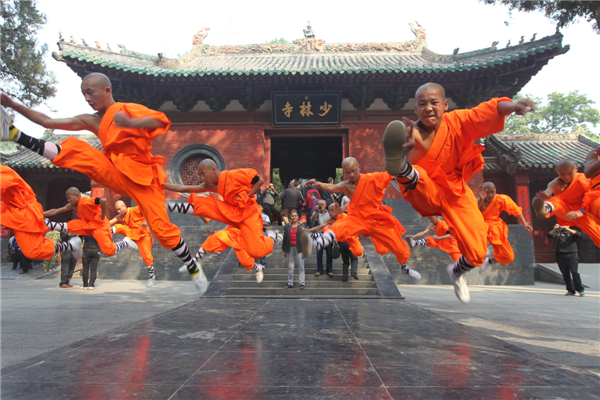Martial arts have been a crucial part of Chinese culture for thousands of years, dating all the way back to the primeval society when people learned defence and attack mechanisms against wild animals, by kicking, leaping, and tumbling out of harm’s way. Now, spanning hundreds of fighting styles, Chinese kung fu has been passed through generations, becoming a mix of tradition, sport and an art.
In the modern world, it’s hard to escape martial arts in some form – thanks to the likes of Jackie Chan, Bruce Lee and Jet Li, martial arts have hit mainstream films and pop culture; there are schools around the globe for people of all ages to learn; and a number of martial arts are now formally recognised in the Olympics.

Teaching Discipline and Defence
One misconception is that martial arts are about aggression or violence. On traditional principle, they have always been a way to teach self-defence, whilst advocating peace and mindfulness.

It’s no real wonder that martial arts are growing in popularity beyond the Far East. From boxing styles and movement sets, to weapon crafting and skills, martial arts encompass a vast spectrum for people of all nationalities and cultures to explore. In the various different forms, martial arts offer more than a lot of other sports do. Physical and mental strength go hand in hand. One of the most common sayings about basic training and teaching is: “Train both Internal and External. External training includes the hands, the eyes, the body and stances. Internal training includes the heart, the spirit, the mind, breathing and strength.”
In essence, martial arts encourage the body and the mind to work alongside one another, channelling strength and wellness; they teach all manner of skills that can help in everyday life, including concentration, patience, mental focus, discipline, calmness, and self-confidence.
The Movements and Styles

One of the first martial arts styles believed to have entered Chinese history was at the Shaolin Temple on Song Mountain, Henan province, as early as 610 CE. Chinese folklore heralds much praise for this era of martial arts, with sayings such as: “All martial arts under heaven originated from Shaolin.”
The Buddhist temple conceived various physical and mental forms, based on the religious philosophy. All these thousands of years later, styles such as ‘Shaolin Boxing’, ‘Northern Legs’ (Beitui is a formation of kicks), ‘Southern Fist’ (Nanquan includes complex hand techniques), and ‘Wing Chun’ (close range combat where defence and attack are delivered in one movement) are still widely practiced.
Another early sect is Wudang martial arts, originating from Mount Wudang in the Hubei Province. Guided by Taoist theories – philosophical beliefs that emphasise living in harmony with the Tao or ‘way’ – this style includes the famed ‘Eight-Diagram Palm’ or Baguazhang. Participants follow a pattern of intricate hand formations and walking rotations, which is comparable to an dance.

Casting the limelight on martial arts in the 2008 Beijing Olympics, Tai Chi was performed in the grand opening ceremony as a demonstration sport. Becoming widely regarded in the Western world too, this martial art is focused on more fluid movements in a slower, elegant style.
There are, of course, many more important branches to martial arts, each harnessing varying degrees of movement and thought.
Bringing Martial Arts to Life Across China
Chinese culture is still very much alive with martial arts and the historical records of kung fu masters and students. There are numerous places across the country that you can visit to learn more about this traditional practice.
The Shaolin Temple in Henan is open to the public, bringing in crowds of tourists and Buddhists to see the kung fu shows and historical relics. Mount Wudang in Hubei and the Emei Mountain in Sichuan can be explored also, offering a rich history as the birthplace of two other major schools of practice.



